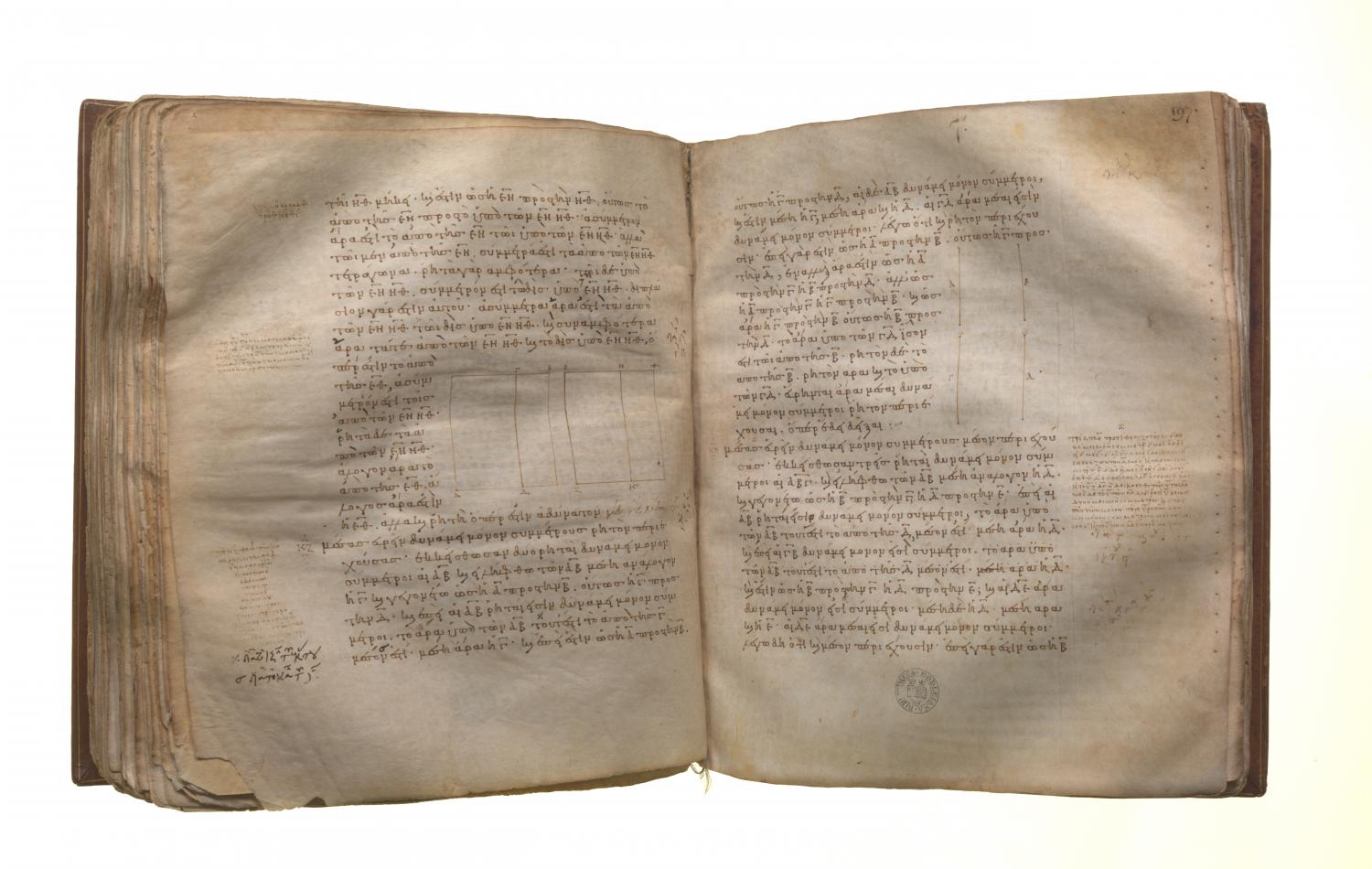Classification of incommensurables: Book 10 Proposition 26
Translations
A medial area does not exceed a medial area by a rational area. For, if possible, let the medial area AB exceed the medial area AC by the rational area DB, and let a rational straight line EF be set out; to EF let there be applied the rectangular parallelogram FH equal to AB, producing EH as breadth, and let the rectangle FG equal to AC be subtracted; therefore the remainder BD is equal to the remainder KH. But DB is rational; therefore KH is also rational. Since, then, each of the rectangles AB, AC is medial, and AB is equal to FH, and AC to FG, therefore each of the rectangles FH, FG is also medial. And they are applied to the rational straight line EF; therefore each of the straight lines HE, EG is rational and incommensurable in length with EF. [X. 22] And, since [DB is rational and is equal to KH, therefore] KH is [also] rational; and it is applied to the rational straight line EF; therefore GH is rational and commensurable in length with EF. [X. 20] But EG is also rational, and is incommensurable in length with EF; therefore EG is incommensurable in length with GH. [X. 13] And, as EG is to GH, so is the square on EG to the rectangle EG, GH; therefore the square on EG is incommensurable with the rectangle EG, GH. [X. 11] But the squares on EG, GH are commensurable with the square on EG, for both are rational; and twice the rectangle EG, GH is commensurable with the rectangle EG, GH, for it is double of it; [X. 6] therefore the squares on EG, GH are incommensurable with twice the rectangle EG, GH; [X. 13] therefore also the sum of the squares on EG, GH and twice the rectangle EG, GH, that is, the square on EH [II. 4], is incommensurable with the squares on EG, GH. [X. 16] But the squares on EG, GH are rational; therefore the square on EH is irrational. [X. Def. 4] Therefore EH is irrational. But it is also rational: which is impossible.

